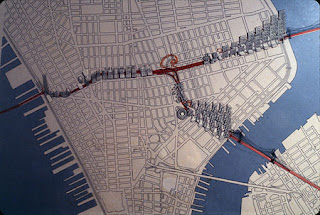It’s time for Metro-North to bring back the Quiet Cars.
Canceled during the pandemic,
the railroad has been dragging its heels in returning this important passenger
amenity despite pleas from both passengers and rail advocates alike.
A little history:
The idea of dedicating one railcar
on each train to a peaceful, cellphone-free, “library like” atmosphere
originated on Amtrak in 2000 when daily commuters from Philadelphia to NYC made
the suggestion. The railroad embraced it
and eventually rolled it out to all of their trains.
Best of all, Amtrak conductors
enforced the rule, reminding offenders they should either comply or move to
another car. They once even chastised
then-NJ Governor Chris Christie for yapping
on his cellphone.
And on one overnight train from Oakland to Portland a woman was arrested,
charged with disorderly
conduct and kicked off the train for talking for 16
hours on her phone!
Quiet car violator de-trained, arrested.
As early as 2006 (while
serving on the CT Rail Commuter Council) I asked Metro-North to follow Amtrak’s
lead (and that of many other major commuter railroads) and add Quiet Cars to
our trains. They downright refused.
Finally, in 2011, Metro-North relented, offering to experiment with the idea. Almost immediately it ran into problems… not because passengers didn’t want a little peace and quiet but because Metro-North conductors wouldn’t enforce the rules.
Sure, they made the occasional
PA announcement and posted signs. But
when passengers started loud conversations on their phones and got icy stares
from their fellow riders, conductors just looked the other way.
That’s strange. Conductors have no trouble enforcing other
rules like showing tickets, banning smoking and luggage on the seats. But in most cases, they did nothing to
enforce this one simple rule: Please
keep quiet.
We saw the same thing happen
during COVID when the TSA instituted federal rules about wearing face masks
onboard: no enforcement, so little or no
compliance.
Apparently, the conductors
didn’t want to be confrontational. But
by looking the other way when they encountered scofflaws, that just lead to
passengers confronting each other. Is
that what the railroad wanted?
During the pandemic the Quiet
Cars just disappeared. But now, when the
railroad claims to be trying to entice passengers back on trains, they still
refuse to return this simple amenity to
make rail riding more tolerable.
The Commuter Council has
spoken up on behalf of riders by writing letters. But CDOT said “talk to the railroad” though
the railroad spent four months not
even giving the Council the courtesy of a reply.
This time I hope Metro-North does
two things: bring back the Quiet Cars and
enforce the rules.
They used to tell us that “train
time is your own time”… time to work, read a book or
even take a nap. But train time is
really “shared time” with up to 100 other passengers on each car. That’s why it’s called mass
transit.
I think we’d all enjoy our commute
a lot more if we showed consideration for our fellow riders.
















